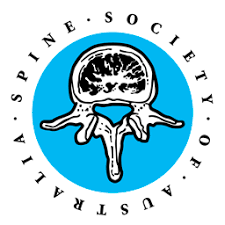Treatment Options
Peripheral nerve pain can be chronic and challenging to manage. Treatment options for peripheral nerve pain typically aim to alleviate the pain, improve the patient's quality of life, and address the underlying cause of the nerve damage when possible.
Peripheral nerve pain treatment options can be broadly categorised into surgical and non-surgical approaches. The treatment choice depends on the underlying cause of the nerve pain, the severity of the condition, the individual's overall health, and their response to previous treatments.
Non-Surgical Treatments
- Medications:
- Anticonvulsants: Drugs like gabapentin and pregabalin can help stabilise nerve activity and reduce neuropathic pain.
- Antidepressants: Certain antidepressants, such as amitriptyline and duloxetine, may affect neurotransmitters in the brain and relieve pain.
- Topical Medications: Creams or patches containing lidocaine or capsaicin can be applied to the affected area to relieve localised pain.
- Pain Relievers: Over-the-counter pain relievers like acetaminophen or nonsteroidal anti-inflammatory drugs (NSAIDs) may offer some relief for mild cases of nerve pain.
- Physical Therapy: Physical therapy can help improve strength, flexibility, and mobility, reducing pressure on affected nerves and alleviating pain.
- Transcutaneous Electrical Nerve Stimulation (TENS): TENS uses a device to deliver electrical impulses to the affected area, disrupting pain signals and providing relief.
- Nerve Blocks: Injections of anaesthetic or steroids around the affected nerves can relieve temporary pain.
- Spinal Cord Stimulation (SCS): A small device is implanted near the spinal cord to deliver electrical pulses that interfere with pain signals, relieving severe, chronic cases.
Surgical Treatments
Nerve Decompression Surgery
Surgical decompression relieves pressure on a compressed nerve by removing or reshaping surrounding tissues or structures.
Peripheral nerve pain decompression can be performed in various areas of the body, including the:
- Carpal Tunnel: Carpal tunnel decompression is a common procedure to treat carpal tunnel syndrome, where the median nerve is compressed at the wrist.
- Ulnar Nerve: Decompression of the ulnar nerve can be performed at the elbow (cubital tunnel decompression) or the wrist (Guyon's canal decompression).
- Sciatic Nerve: Sciatic nerve decompression may be performed for individuals with sciatica caused by sciatic nerve compression in the lower back or buttock region.
- Median Nerve at the Elbow: Pronator teres release is a decompression surgery for the median nerve at the elbow.
- Peroneal Nerve: Peroneal nerve decompression can be performed at the knee (fibular head decompression) or the ankle.
Nerve Repair or Grafting
In cases of nerve damage or injury, surgery may involve repairing the damaged nerve or using a graft to bridge the gap between the damaged nerve ends.
Nerve Transfer
Nerve transfer surgery involves transferring a healthy nerve from one body area to another to restore function in a specific area affected by nerve injury or compression.
Tumour Removal
If peripheral nerve pain is caused by a tumour compressing a nerve, surgical removal of the tumour may be necessary.
Who is Suitable for Peripheral Nerve Pain Treatments?
Generally, anyone experiencing peripheral nerve pain can be considered for treatment options, but the suitability for specific treatments may vary from person to person. Some factors that may influence the choice of treatment include:
- Underlying Cause: Identifying and addressing the underlying cause of nerve pain is crucial. For example, managing blood sugar levels is essential to the treatment plan if the pain is due to diabetes-related neuropathy.
- Severity of Pain: The pain's intensity and duration will determine the treatment approach. Mild cases of nerve pain may respond well to over-the-counter medications and lifestyle changes. In contrast, more severe cases may require stronger medications or interventions like nerve blocks or spinal cord stimulation.
- Overall Health: The individual's general health and medical history play a role in determining the suitability of certain treatments. Some medications or interventions may not be recommended for individuals with certain medical conditions or allergies.
- Tolerance and Response to Medications: Medication response can vary among individuals. Some people may find relief with certain drugs, while others may experience side effects or limited effectiveness.
- Personal Preferences: Treatment plans should consider the patient's preferences and lifestyle. Some individuals may prefer non-pharmacological approaches like physical therapy or alternative therapies.
Benefits of Peripheral Nerve Pain Treatments
- Pain Relief: The primary goal of treatments for peripheral nerve pain is to provide relief from the discomfort and distress caused by chronic pain.
- Improved Quality of Life: By reducing pain levels, patients can experience an improvement in their overall quality of life. They can engage in daily activities more comfortably and enjoy a better emotional state.
- Enhanced Functionality: Certain treatments, such as physical therapy, can improve strength and mobility, allowing individuals to perform daily tasks more easily.
- Prevention of Complications: Managing the underlying cause of peripheral nerve pain can help prevent further nerve damage and potential complications associated with the condition.
- Reduced Dependency on Medications: With effective treatment, some individuals may be able to reduce their reliance on pain medications, especially opioids, which carry a risk of dependence and side effects.
- Customised Approach: Various treatment options are available for peripheral nerve pain, allowing healthcare professionals to tailor the approach to each individual's needs and preferences.
- Potential Long-Term Solutions: In some cases, treatments like nerve blocks or spinal cord stimulation can offer long-lasting pain relief, reducing the need for frequent medication adjustments.
- Combining Therapies: A multimodal approach that combines different treatments can often be more effective than relying on a single intervention.
Not all treatments will work for everyone, and managing peripheral nerve pain may require trial and error to find the most effective combination for each individual. Doctors with expertise in pain management and neurology can help guide patients toward the most suitable treatment plan.
Prognosis of Peripheral Nerve Pain Treatments
In many cases, early and appropriate treatment can significantly improve pain and quality of life. However, it's essential to recognise that peripheral nerve pain can be challenging to manage, and complete resolution may not always be possible.
Positive Prognostic Factors:
- Identifying and addressing the underlying cause of nerve pain can lead to better outcomes.
- Some individuals may respond well to specific medications, providing significant pain relief and improved functionality.
- Non-pharmacological treatments like physical therapy and nerve blocks can be effective in certain cases.
- A multimodal approach combining different treatments may yield better results than a single intervention.
Negative Prognostic Factors:
- Chronic and severe peripheral nerve pain may be more challenging to manage effectively.
- Nerve damage caused by certain medical conditions, such as advanced diabetes, may be irreversible, making pain management the primary goal.
- Individual response to medications can vary; some people may experience limited relief or significant side effects.
- If the underlying cause of the nerve pain is not adequately addressed, it may hinder the success of pain management efforts.
Peripheral Nerve Pain Treatments Risks
While treatments for peripheral nerve pain can be beneficial, they may also carry certain risks and potential side effects. Some common risks associated with these treatments include:
- Medication Side Effects: Anticonvulsants, antidepressants, and opioids can cause side effects such as dizziness, drowsiness, nausea, constipation, and mood changes.
- Dependency and Addiction: Opioid medications carry a risk of dependence and addiction, especially when used for prolonged periods.
- Allergic Reactions: Some individuals may be allergic to certain medications or topical agents to manage nerve pain.
- Surgical Risks: Procedures like nerve blocks or spinal cord stimulation involve surgical interventions and come with risks, such as infection, bleeding, or nerve damage.
Neurosurgeons and patients must work together to weigh each treatment option's potential benefits and risks and make informed decisions.
Contact Us
Hours
Monday to Friday
9.00am – 5.00pm
*This may vary on occasions or the rooms may be briefly unattended.
All Rights Reserved | Greg Malham, Neurosurgeon, BSc MBChB DMed FRACS



